iPad Air vs iPad Mini (2025): Looking to choose between the iPad Air and the iPad Mini in 2025? This in-depth comparison covers everything—performance, display, design, battery life, accessories, and price—to help you decide which Apple iPad suits your needs best.
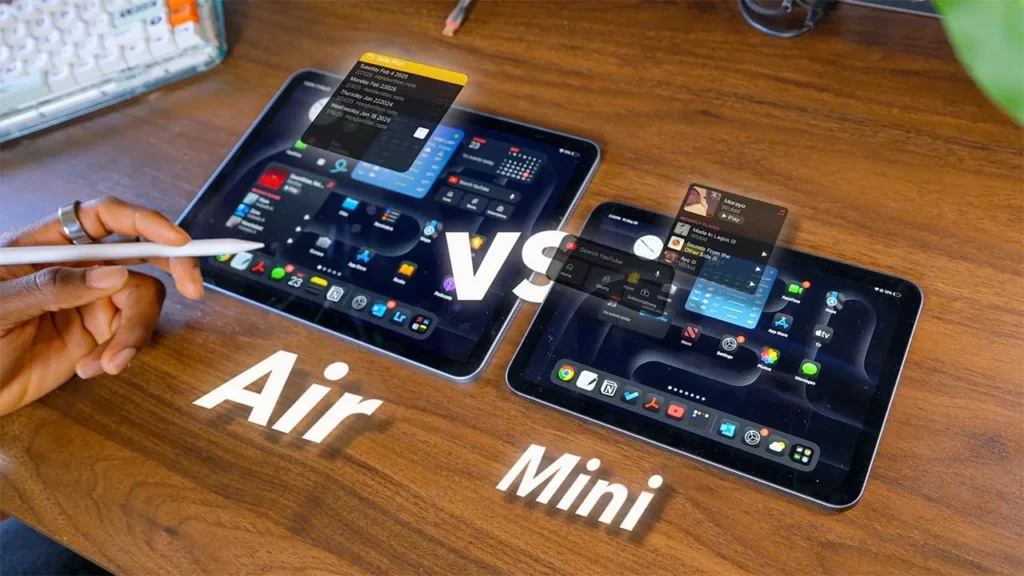
Table of Contents
iPad Air vs iPad Mini (2025) Comaprison Table
| Feature | iPad Air (2025) | iPad Mini (7th Gen) |
|---|---|---|
| Processor | M3 Chip | A17 Pro Chip |
| Display Size | 11″ or 13″ | 8.3″ |
| Display Type | Liquid Retina, P3, True Tone | Liquid Retina, P3, True Tone |
| Pixel Density | 264 PPI | 326 PPI |
| Storage Options | Up to 1TB | Up to 512GB |
| Apple Pencil Support | Apple Pencil Pro / USB-C Pencil | Apple Pencil Pro / USB-C Pencil |
| Keyboard Compatibility | Magic Keyboard & Bluetooth | Bluetooth Only |
| Battery Life | Up to 10 hours | Up to 10 hours |
| Camera | 12MP Rear, Center Stage Front | 12MP Rear, Center Stage Front |
| Weight | 462g (11″) / 617g (13″) | 293g |
| Price Range | $599 – $1,499 | $499 – $949 |
| Ideal For | Students, Creatives, Hybrid Users | Travelers, Casual Users, Minimalists |
Choosing between the iPad Air and iPad Mini can feel like splitting hairs—but the difference matters a lot once you get these devices in your hands. One is your powerful, almost-laptop standout, and the other is the ultimate on-the-go sidekick you can slip into your pocket. This comparison dives deep into design, performance, display, accessories, OS features, battery life, prices, and real-world use cases to help you decide which one deserves your investment.
Design and Portability: iPad Air vs iPad Mini
Weight and Size Differences
The iPad Mini 7 sports an 8.3‑inch screen and weighs only 293 grams—lighter and more compact than most paperback novels. Throw it in your bag or pocket, and it becomes an effortless travel buddy.
On the flip side, the iPad Air is available in 11‑inch and 13‑inch formats. Even the lighter 11‑inch model feels more like a modest-sized laptop—great for typing and drawing, but not as convenient for single-handed use. If you grab the 13‑inch Air, you’re carrying over 600 grams of device, and with accessories, you’re flirting with laptop territory.
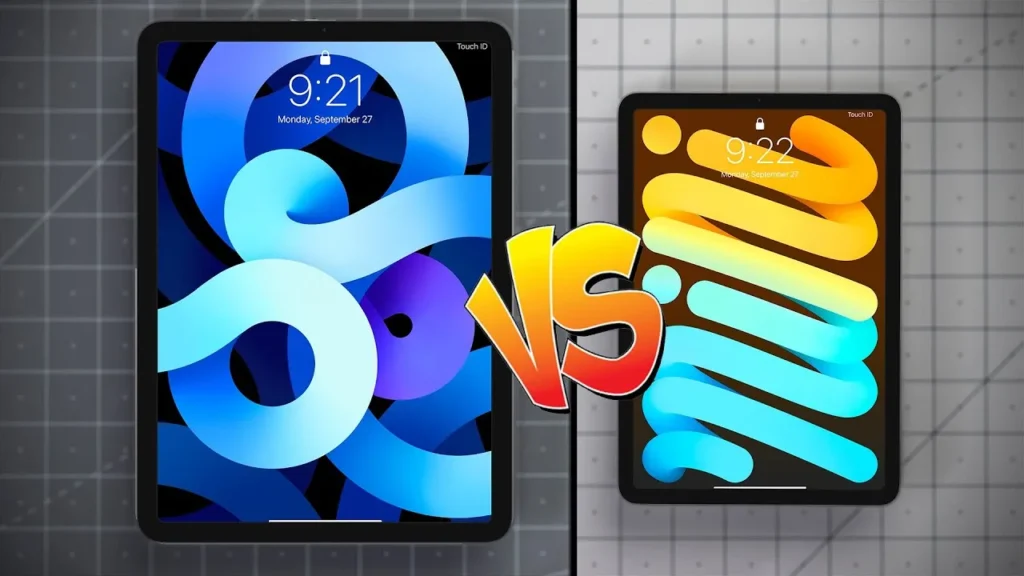
Build Quality and Aesthetic Appeal
Both models offer Apple’s sleek aluminum unibody design, rounded edges, and colorful finishes. The Mini feels more playful—ideal for casual use, kids, or those who prioritize portability. The Air with the Magic Keyboard delivers a pro feel, squaring off and aligning closer to the iPad Pro’s aesthetic. Its larger canvas elevates productivity and multitasking in ways the Mini can’t match—unless you surrender its pouch-sized accessibility.
Performance and Processing Power: iPad Air vs iPad Mini
Apple M3 vs A17 Pro – Specs Breakdown
Under the hood, the two iPads differ significantly:
- Mini (A17 Pro): A 3nm chip from the iPhone 15 Pro, extremely efficient, with strong day-to-day performance.
- Air (M3): The same powerhouse chip that drives the latest MacBook Air/Pro, equipped with extra CPU and GPU cores.
The M3 delivers far superior multi-core and GPU performance, even powerful enough for video editing and software traditionally reserved for desktops.
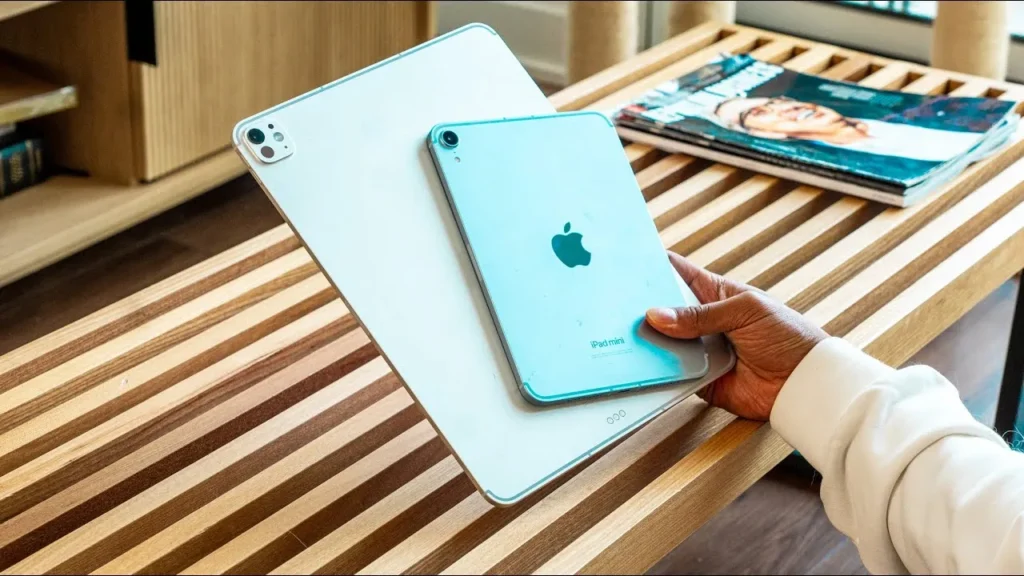
Real-World Performance Testing
Despite the difference on paper, both handle everyday tasks—web browsing, video playback, gaming, and social media—with fluid ease. In benchmarks, the M3 scores significantly higher, but in actual usage, especially for light to moderate tasks, the difference is barely noticeable.
In CapCut, editing 4K video on both was smooth. Gaming on each device was enjoyable—although the Air’s larger screen enhances immersion, it’s more about preference than speed.
Display Quality and Experience: iPad Air vs iPad Mini
Liquid Retina Display – Mini vs Air
Both use Liquid Retina LED screens, boasting wide P3 color, True Tone, and anti-reflective coatings. Brightness levels are within 100 nits of each other, with the Mini’s 8.3-inch being slightly sharper and the Air offering a larger viewing area.
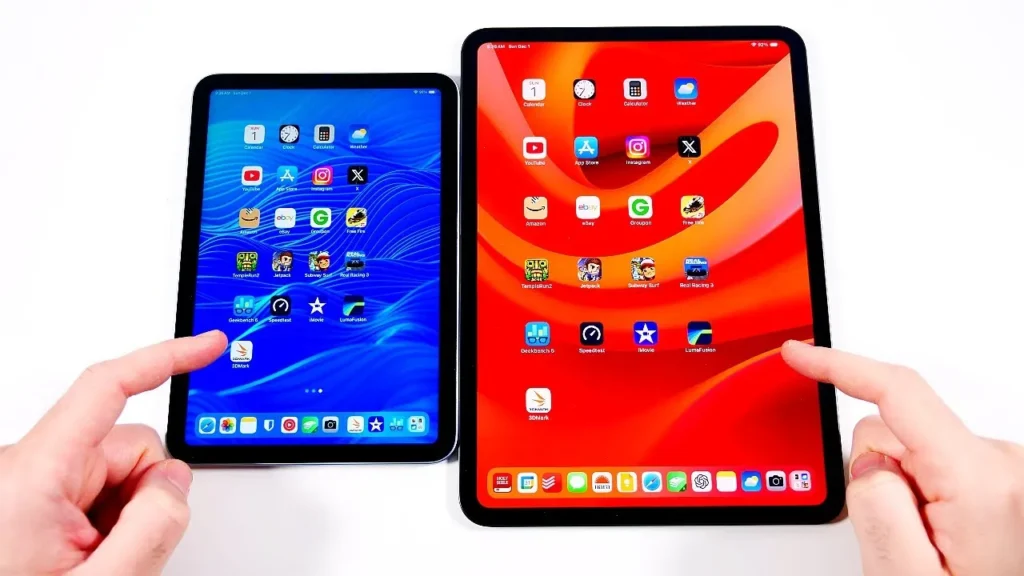
Pixel Density and Screen Sharpness Explained
The iPad Mini wins in pixels per inch (PPI)—crispness is noticeably fine if you’re editing tiny text or pixel-focused graphics. Think of it like painting: the Mini’s canvas is densely packed with detail; the Air’s is larger and more spacious but with slightly broader brush strokes.
For most users, both screens deliver excellent quality. The Mini just edges ahead in sharpness due to its size and higher PPI.
Accessory Compatibility: iPad Air vs iPad Mini
Apple Pencil and Keyboard Support
Both support Apple Pencil Pro’s hover feature or the cheaper USB‑C Apple Pencil. The Air also pairs with the Magic Keyboard (with trackpad), ideal for hybrid productivity, though it costs more and adds bulk.
The Mini doesn’t officially support the Magic Keyboard, but any Bluetooth keyboard works fine—minimal size, maximum portability.
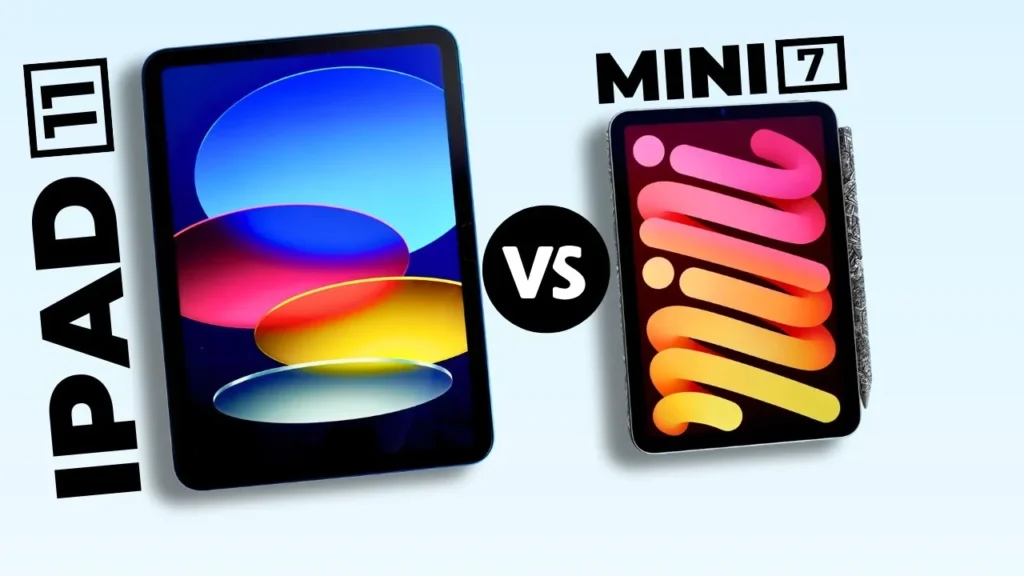
Best Cases and Folio Options
Accessory selection varies:
- Air: Plenty of pro-style cases, Magic Keyboard folios, and options built for heavy productivity.
- Mini: Harder to find well-designed cases—until recently. Third-party brands now offer folios with vertical stand, phone integration, and Apple Pencil slots. Ideal for on-the-go creative or note-taking setups.
Battery Life and Charging Options: iPad Air vs iPad Mini
Power Management in Real Usage
Apple claims both devices deliver similar battery life, and real-world tests confirm it—around 10 hours of mixed usage: browsing, video, calls, and light editing. Even with the M3’s added cores, efficiency keeps battery performance strong.
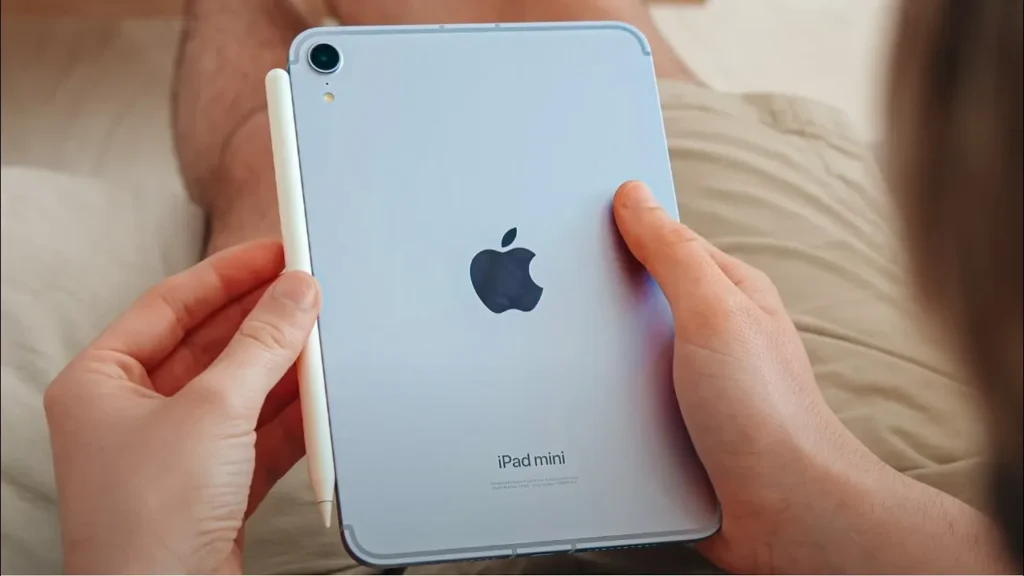
Charging Ports and Magic Keyboard Perks
Both use USB‑C ports. With the Magic Keyboard connected to the Air, you can charge both devices through the keyboard’s passthrough port. The Mini just charges standalone.
iPadOS 26 – The Game Changer?
New Features and Laptop-Like Functionality
iPadOS 26, currently in beta, introduces a Mac-like menu bar, advanced window multitasking, and expanded trackpad support. On the Air, with Magic Keyboard, it delivers a powerful hybrid experience—almost laptop-like.
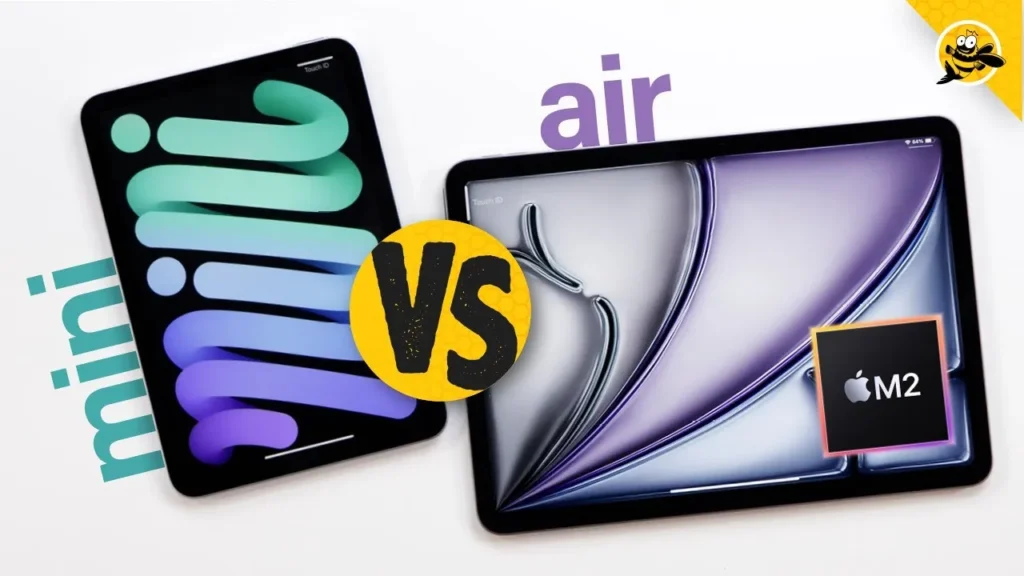
How the OS Enhances Mini vs Air
On the Air, the OS features are game-changing, turning it into a serious productivity tool.
On the Mini, iPadOS 26 still shines—but feels more like improved multitasking rather than a shift to computer mode. The smaller screen means less upscaling of Mac-like workflows, preserving the pure iPad experience that many love.
Cameras and Audio Setup: iPad Air vs iPad Mini
Camera Hardware and Center Stage
Both share the same front-facing Center Stage camera (landscape edge on Air, top‑center on Mini) and 12MP rear camera capable of 4K recording. The Air’s front camera placement—centered in landscape mode—is perfect for video calls while typing.
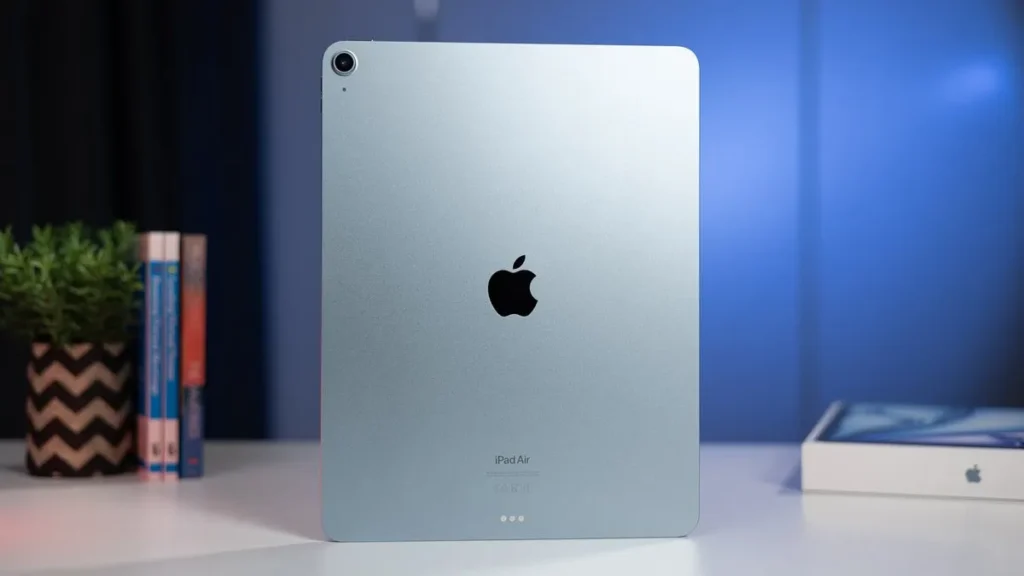
Stereo Speakers and Microphone Comparison
Each sports landscape stereo speakers and dual-microphone arrays. Audio quality is excellent across both, and voice pickup is crystal clear. No edge here—just evenly impressive setups.
Connectivity and Network Features: iPad Air vs iPad Mini
Both iPads feature Wi‑Fi 6E and offer 5G cellular options. If you’re mobile-heavy—commuting or traveling—both promise fast internet speeds, though a carrier plan adds to your monthly cost.
Price-to-Performance Ratio: iPad Air vs iPad Mini
Pricing Structure
| Model | Base Price | Max Config Price |
|---|---|---|
| iPad Mini 7 | $499 | $949 (A17 Pro, max storage, 5G) |
| iPad Air 11″ | $599 | ~$1,499 (M3, max storage, 5G) |
| iPad Air 13″ | $749 | ~$1,699 |
If you max out storage and connectivity, the Mini and 11″ Air converge in price—but you’re sacrificing performance and screen space with the Mini.
Storage Tiers and Value for Money
The Air offers up to 1TB—crucial for professionals storing large files or videos. The Mini caps out at 512GB. If you’re using cloud storage or need portability, the Mini is fine. But if on-device storage matters, the Air offers significantly more value.
Who Should Buy the iPad Air?
- Students and Creatives
- Need a productivity boost with full-sized typing and multitasking.
- Drawers, notetakers, or designers benefit from the larger canvas and Apple Pencil compatibility.
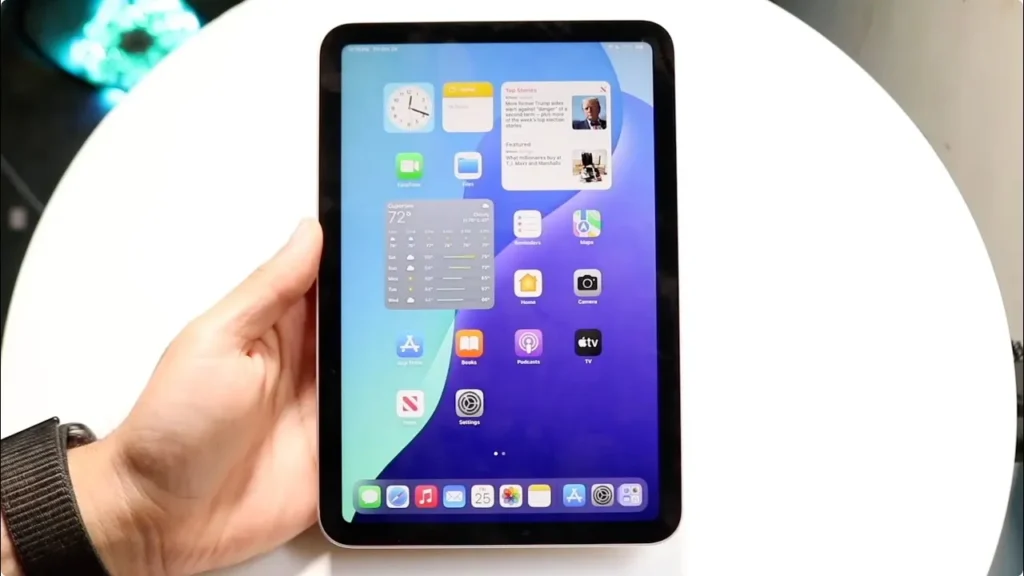
- Hybrid Users
- Those who juggle between device and desktop.
- Don’t need the full power of a MacBook, but want flexibility when traveling light.
- Power Users
- Video editors, programmers, or people who want a full desktop-adjacent experience on the go.
Who Should Buy the iPad Mini?
- Frequent Travelers
- Slip it in your pocket, use it on a flight, pair it with earbuds, and it disappears seamlessly.
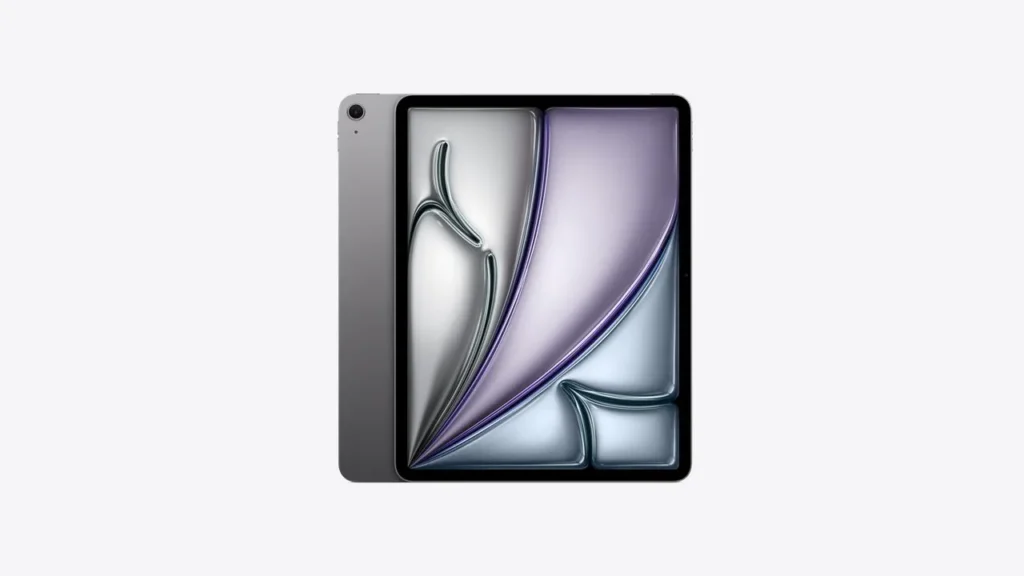
- Casual Users
- For reading, streaming, casual gaming, note-taking—it’s fast, fluid, and fun.
- Minimalists and Kids
- Great for younger users—adults or teens can still balance performance and portability.
Final Verdict: iPad Air vs iPad Mini
- The iPad Air is aiming squarely at productivity: a “laptop-lite” that smartly bridges the worlds of iPad and MacBook.
- The iPad Mini, on the other hand, champions portability and streamlined simplicity, empowering you to do nearly everything an iPad can do—without asking for more pocket space.
If what you want is a powerful, creative, multitask-ready device that can replace a laptop much of the time, go Air. If you prefer an unfussy, ultra-portable iPad experience, or you’re on a tighter budget, pick the Mini—you’ll be surprised by how much it packs into a little frame.
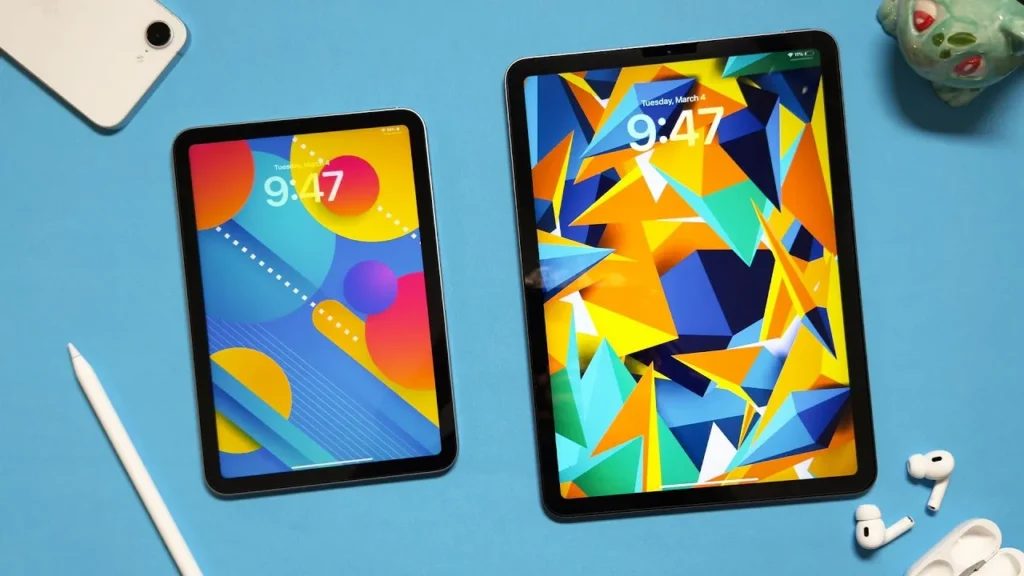
Both the iPad Air and the iPad Mini are exceptional in their respective domains. Your choice boils down to:
- Screen real estate vs portability
- Storage and performance needs
- Accessory usage (keyboard, pencil)
- Budget and customization (storage, cellular, tech use cases)
Whichever path you choose, you’re getting best-in-class Apple hardware—what matters most is making sure it fits with your lifestyle, not just your wishlist.
FAQs: iPad Air vs iPad Mini
1. Can the iPad Mini really handle pro tasks?
Yes—its A17 Pro chip can manage many tasks like photo editing, light gaming, and video processing with ease. But for heavier workloads like complex video editing or multitasking across large projects, the M3-powered Air is noticeably stronger.
2. Is the iPad Air good enough to replace a MacBook?
It’s almost there. With iPadOS 26, trackpad, app multitasking, and accessories like Magic Keyboard, it covers a lot. But if your daily workflow depends on desktop Linux apps, full IDEs, or extensive windowed multitasking, a MacBook still offers unmatched versatility.
3. Are both compatible with Apple Pencil Pro?
Yes! Both tablets support the hover feature with Apple Pencil Pro, and the cheaper USB-C Pencil is also compatible.
4. Which one is better for kids or casual users?
The Mini wins here. It’s smaller, lighter, and easier to use one-handed—perfect for younger users, and less pricey to replace or repair.
5. Should I wait for the next iPad refresh?
Unless you want brand-new features like OLED screens or USB‑C 3.1, both these models are excellent. For most users, there’s no need to wait—either model works beautifully today.
There you have it—a friendly, detailed comparison that keeps it real. Whichever device you choose, you’re getting exceptional value and performance. Share which route you’re leaning toward and why—I’m genuinely curious!
Please don’t forget to leave a review.
iPad Air, iPad Mini, iPad Air vs iPad Mini, iPad Air 2025, iPad Mini 7th Gen, Apple iPad comparison, M3 chip, A17 Pro chip, iPad display comparison, iPad performance, iPadOS 26, Apple Pencil compatibility, Magic Keyboard, iPad battery life, iPad pricing 2025, best iPad for students, iPad for gaming, portable iPad, laptop replacement iPad, iPad screen size
Thank You for visiting Tech Uplifter!
Don’t forget to Subscribe to our Official Newsletter for latest updates.

